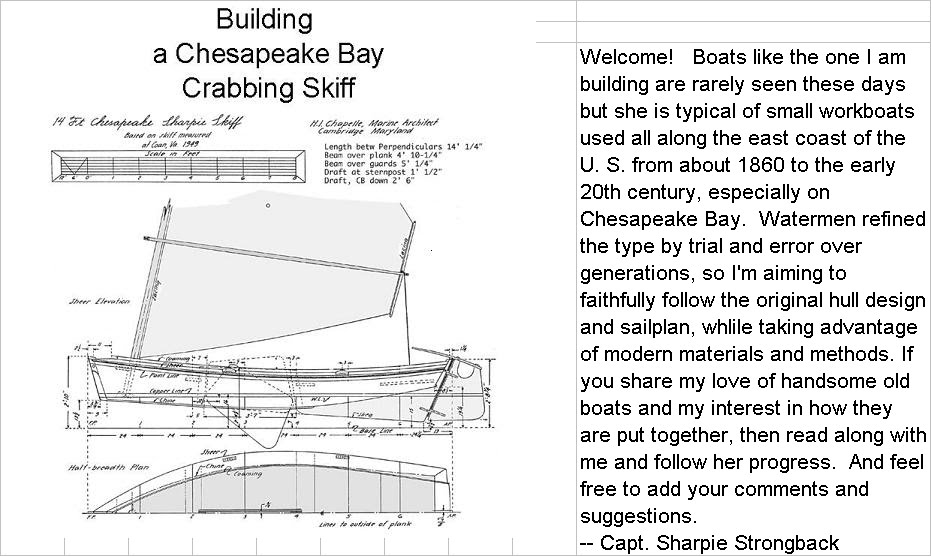Super Sunday, February 7. Since there has been no boatbuilding for three days now, two for weather and one for my youngest granddaughter’s first birthday, I’ll give some background about Howard I. Chapelle, my skiff’s designer.
My introduction to Howard Chapelle, came in the form of his wonderful book, The History of American Sailing Ships, a gift from my girlfriend in the 1960s. I read and reread that book until it fell apart, and it started me on a lifelong interest in boat and sailing ship designs, and in Chapelle’s books in particular. I have added eight more of his books over the years including a short one on Chesapeake Bay Crabbing Skiffs. And speaking of lifelong interests, I’ve been married to the girlfriend for 45 years.
Chapelle (1901-1975) had an unusual and varied career in maritime businesses. Building on a foundation of practical experience, he eventually became the unquestioned leading American historian writing about maritime history and boat design. Starting as a teenager, he apprenticed as a shipyard worker and designer for several shipbuilders. By the 1930s he had his own boatyard and design business in Cambridge, Md., on the Chesapeake’s Eastern Shore. When that business dried up in the depression, he worked on a New Deal project documenting the vessels in the American merchant marine. During the WWII years he was building ships for the merchant marine. He resumed his design career after the War, but his research background led to a Guggenheim fellowship to study Colonial ship building in England, and he later did work designing workboats for the Canadian and Turkish governments. Throughout, he continued to document the fast-disappearing sailing workboats on the Eastern seaboard, especially on the Chesapeake. He wrote at least a dozen books and monographs about everything from clipper ships to Greenland kayaks.
The 14’ sharpie skiff I’m building was designed by Chapelle in 1949, based on a workboat he measured at Coan, Va. I would guess there have been any number of boats built to the design, but I don't know for sure. It may have been his smallest design, but Chapelle was a strong advocate of simple small boats as the best way for sailors to get on the water.
In 1957 Chapelle was appointed curator of the Transportation division of the Smithsonian Museum of History and Technology, overseeing the huge National Watercraft Collection, and continued there until his retirement in 1971.
I was lucky enough to meet Howard Chapelle and spend some time with him 1971. I stole a morning on a business trip to D.C. to visit the Smithsonian specifically to see the collection of shipbuilders’ half-models which I remembered seeing on a previous visit years before. I even had with me Chapelle’s book-sized catalogue of the collection. But I was disappointed not to find the models on display. An attendant told me the models had been put in storage upstairs to make room for other displays. He seemed surprised anyone would be so interested in the half-models, but he telephoned to see if someone would take me up to the storeroom. The someone was an elderly gentleman who turned out to be Chapelle. He invited me up to his office to wait for his assistant to return from lunch and show me the models. I spent the better part of an hour with him, talking about sailing ships and looking at drawings he was making for what turned out to be his last book, The American Fishing Schooners. He was interested in a large fishing schooner, still working, which I had seen on the north coast of Newfoundland the year before.
Chapelle mentioned that after he finished the book about fishing schooners, he intended to revise his 1936 book Boatbuilding, updating it to include modern materials and methods. He never got to that, and I wish he had; it would have been useful on my current project. At least his comment gives me comfort that traditional materials and methods are secondary to the boat design itself.
Sunday, February 7, 2010
Subscribe to:
Post Comments (Atom)

No comments:
Post a Comment